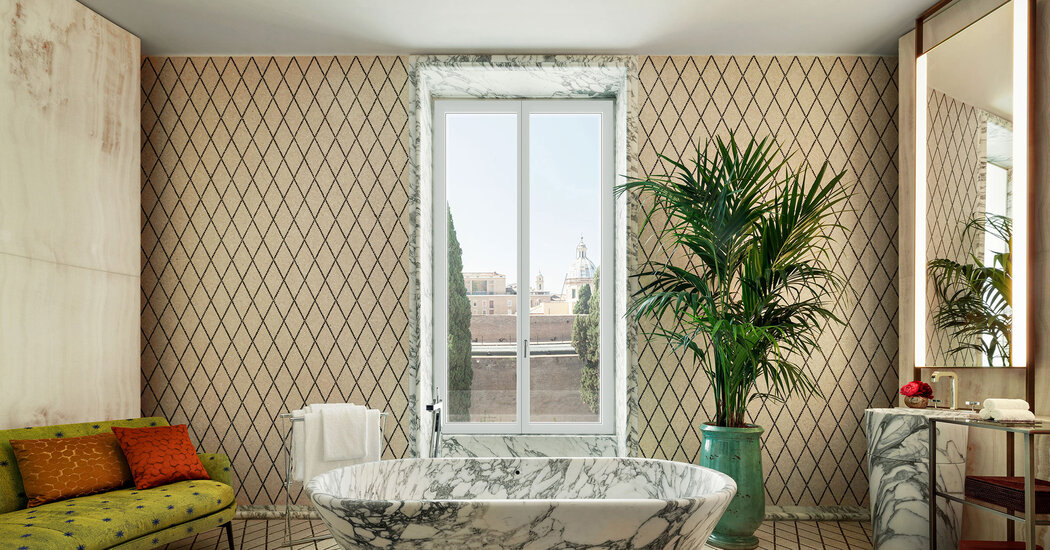While Rome’s charms may be, as they say, eternal, it’s never been a city particularly prized for its hotels. Until recently, upmarket lodging in the Italian capital usually meant an ostentatiously decorated pile meant to evoke the city’s 16th- and 17th-century palazzi, stuffed with gilded furniture and vague nostalgia. Over the past year or so, an entirely new breed of luxury hotel has emerged, one that pays tribute to the modernist architects who remade much of Rome in the Rationalist style in the early-to-mid-20th century. The Bulgari hotel, for example, opened last summer in a hulking 1930s government building designed by the prominent Trieste-born architect Vittorio Ballio Morpurgo. And the Edition hotel moved into a bank partly attributed to Marcello Piacentini, the architect responsible for the EUR district, the neighborhood of massive edifices constructed under Mussolini. Other notable new offerings take their style cues from 21st-century Scandinavia, deftly blending northern design aesthetics with Italian Renaissance art and Roman artifacts. Here, a closer look at five new accommodations that break with tradition.
Six Senses Rome
The first city hotel from a company better known for its beach resort and spas, Six Senses Rome opened last spring in a historic palazzo on Piazza San Marcello, a short walk from the Pantheon. The Spanish architect Patricia Urquiola oversaw the design, keeping the graceful lines of the original structure while transforming it into a light-drenched contemporary retreat. She housed the reception and lobby bar in a glass-topped atrium, filling the space with giant potted plants. In one section of the lobby, glass flooring reveals a glimpse of an ancient subterranean baptismal pool that belongs to the neighboring church. For the 96 guest rooms, Urquiola finished the walls with cocciopesto plaster, a type of lime wash made with crushed bricks, a construction material as old as the city itself, while the furnishings, in muted pastels and rounded shapes, are unmistakably modern. Then there’s the spa, in many ways the centerpiece of the hotel. Awash in travertine marble, it includes five treatment rooms, a yoga studio, a series of indoor plunge pools, a hammam and a space dedicated to biohacking treatments, like pulsed electromagnetic field therapy and LED light masks, for when all the age-old wellness remedies don’t quite cut it. Rooms from about $1,200 a night.
Palazzo Ripetta
In the 1960s, Luigi Moretti, the Roman…
Click Here to Read the Full Original Article at NYT > Travel…
